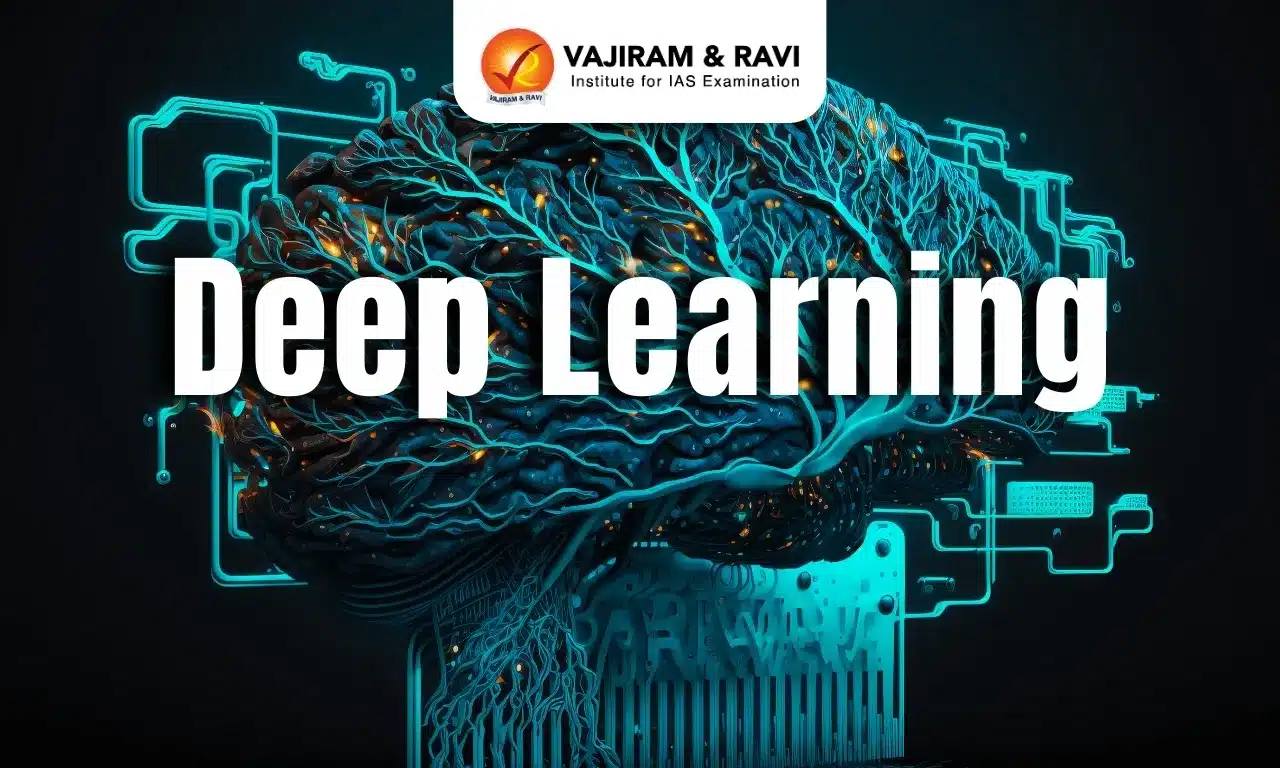Deep learning, a subset of machine learning, has revolutionized the way machines process and interpret data. It teaches computers to do what comes naturally to humans; for example, in the case of Self-Driving cars, recognizing the signals to stop or go. Deep Learning involves the use of neural networks with multiple layers (three or more layers) to simulate human brain functions.
Deep learning technology lies behind everyday products and services (for example, digital assistants, voice-enabled TV remotes, and credit card fraud detection), as well as emerging technologies (for example, self-driving cars).
Significance of Deep Learning
Deep learning is gaining popularity nowadays due to its supremacy in terms of accuracy. Major tech companies are investing heavily in deep learning.
- Google’s search engine, voice recognition system, and self-driving cars all rely heavily on deep learning.
- Google announced Smart Reply, a deep learning network that writes short email responses for you.
- Netflix knows which show you will want to watch next due to its deep learning algorithms.
- Facebook recognizes your friend’s face in a digital photo, as deep learning is very useful for image/video processing or computer vision applications.
- YouTube’s deep learning networks pick out an attractive still from a video to use as a thumbnail.
Difference between Deep Learning and Machine Learning
Although Deep Learning is a subset of Machine learning, both of which are parts of Artificial Intelligence, they have some differences based on multiple factors like type of data, methods, etc.
- Machine learning employs a simple structure of neural networks with a limited number of layers, while deep learning uses a deep, hierarchical structure with multiple layers to capture complex relationships in the data.
- The Machine Learning though, is quick and easy to set up but may have limitations in effectiveness. Deep Learning takes more time to set up but gives immediate and effective results.
- Deep learning is well-suited for tasks involving image and speech recognition, while machine learning is used in tasks to recommend items on different shopping websites like Amazon, Flipkart, etc.
Applications of Deep Learning
Deep Learning has importance in several fields. Some of the applications of Deep Learning are as follows:
- Image Recognition: It classifies images, clusters them by similarities, and performs object recognition within scenes.
- For example, ViSENZE has developed commercial applications that can empower image recognition and tagging using their deep learning networks.
- Law Enforcement: Deep learning algorithms are important in analyzing transactional data to detect patterns indicative of fraudulent or criminal activity. For example, speech recognition like Siri or Alexa and computer vision technologies
- Financial Services: Financial institutions leverage predictive analytics powered by deep learning to inform algorithmic trading, assess business risks for loan approvals, detect fraud, and manage credit and investment portfolios.
- Customer Service: Chatbots and virtual assistants like Slush, Maya, etc., employing deep learning technology, enhance customer service experiences. They utilize natural language processing and speech recognition to engage with users in a personalized manner, significantly improving the efficiency of customer support.
- Healthcare: Deep learning has found extensive applications in healthcare, particularly in medical imaging detecting disease from X-ray images and classifying them into several disease types in radiology. It aids specialists in interpreting a large volume of images in less time, thereby improving diagnostic accuracy.
- Medical Research: Cancer researchers are using deep learning to automatically detect cancer cells. Teams at UCLA built an advanced microscope that yields a high-dimensional data set used to train a deep learning application to accurately identify cancer cells.
- Deep Learning can also be used in Magnetic Resonance (MR) and Computed tomography (CT), Electronics Health Records (EHR), etc.
- There are several chatbots also which are used to improve the mental health of people. For Example, Happify, Moodkit, etc.
- Education: It enables adaptive learning platforms that analyze individual student performance and edit content to suit their needs.
- It also facilitates automated grading and feedback, saving educators time and providing students with timely assessments.
- Aerospace and Defense: Deep learning is used to identify objects from satellites that locate areas of interest, and identify safe or unsafe zones for troops.
- It can also improve Fuel efficiency by optimizing consumption.
- It can be helpful in Training by utilizing Virtual Reality (VR) and Augmented Reality (AR).
Issues associated with Deep Learning
With the continuous improvement in technologies like Deep Learning, it is easier for humans to live their lives. However, such technological advancements bring several challenges to society that need to be tackled. Following are a few challenges:
- Time consuming and costly:
- Deep learning models require substantial computing power, which can be expensive and time-consuming.
- Specialized hardware may be necessary for optimal performance.
- Difficult to understand:
- Deep learning models can be hard to understand, posing challenges for transparent decision-making, especially in critical fields like healthcare or finance.
- Ethical and social implications:
- Deep learning applications have far-reaching societal impacts, both positive and negative.
- Issues of privacy, discrimination, manipulation, and potential harm need careful consideration.
- Lifelong learning and adaptation:
- Deep learning models may struggle with adapting to dynamic real-world environments, potentially leading to outdated or irrelevant predictions.
- Collaboration and communication:
- The multidisciplinary nature of deep learning can create coordination and understanding challenges among team members.
Measures to be taken in future
To overcome the challenges associated with Deep Learning technology, there are a few measures which can be taken, such as,
- Reduce Cost: There is a need to optimise model parameters, utilize cloud-based platforms, and make cost-effective hardware choices.
- Improve Interpretability: There should be employment of tools for model analysis and visualization and transparent communication of results while acknowledging limitations.
- Privacy Protection: Mitigation strategies involve ethical awareness, adherence to responsible AI principles, and active engagement with stakeholders. Policies and legislation appropriate to safeguard privacy are required.
- Real-world Dynamism: As time changes, many things become redundant with it and several new dimensions get opened up in the real world. Hence, this would require regular model updates, retraining, and utilizing techniques like online and incremental learning.
- Establishing Communication: Fostering a culture of collaboration, using efficient tools for data sharing and project management, and valuing diverse contributions are key strategies.
Deep Learning UPSC PYQ
Question 1: Consider the following statements: (UPSC Prelims 2025)
- It is expected that Majorana 1 chip will enable quantum computing.
- Majorana 1 chip has been introduced by Amazon Web Services (AWS).
- Deep learning is a subset of machine learning.
Which of the statements given above are correct?
a) I and II only
b) II and III only
c) I and III only
d) I, II and III
Ans: (c)
Last updated on November, 2025
→ Check out the latest UPSC Syllabus 2026 here.
→ Join Vajiram & Ravi’s Interview Guidance Programme for expert help to crack your final UPSC stage.
→ UPSC Mains Result 2025 is now out.
→ UPSC Notification 2026 is scheduled to be released on January 14, 2026.
→ UPSC Calendar 2026 is released on 15th May, 2025.
→ The UPSC Vacancy 2025 were released 1129, out of which 979 were for UPSC CSE and remaining 150 are for UPSC IFoS.
→ UPSC Prelims 2026 will be conducted on 24th May, 2026 & UPSC Mains 2026 will be conducted on 21st August 2026.
→ The UPSC Selection Process is of 3 stages-Prelims, Mains and Interview.
→ UPSC Result 2024 is released with latest UPSC Marksheet 2024. Check Now!
→ UPSC Prelims Result 2025 is out now for the CSE held on 25 May 2025.
→ UPSC Toppers List 2024 is released now. Shakti Dubey is UPSC AIR 1 2024 Topper.
→ UPSC Prelims Question Paper 2025 and Unofficial Prelims Answer Key 2025 are available now.
→ UPSC Mains Question Paper 2025 is out for Essay, GS 1, 2, 3 & GS 4.
→ UPSC Mains Indian Language Question Paper 2025 is now out.
→ UPSC Mains Optional Question Paper 2025 is now out.
→ Also check Best IAS Coaching in Delhi
Tags: deep learning quest


















